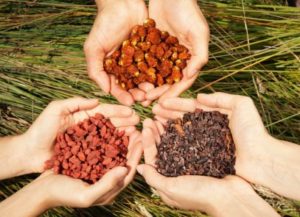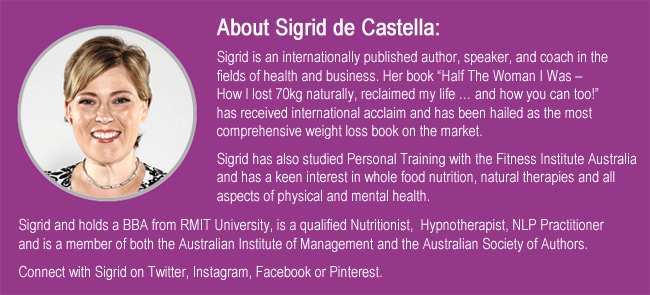To view the original InShapeNews article click here.
I feel the question here that needs to be asked is, “Do ‘Superfood’ actually have a scientific basis, or is it just some marketer’s ‘wet dream’ trying to con you into buying more of something?

Let’s see if I can answer this for you. I believe that a ‘Superfood’ is an unscientific label used in different ways, depending on the slant of the article or promotion, for marketing purposes. Generally it’s used to describe foods with high nutrient or phytonutrient content that, if consumed in the right quantities, may lead to ‘suggested’ health benefits. Unfortunately there is no real regulation around the claims of ‘Superfoods’ and many are based on discussion papers or inconclusive and very limited research at best, or purely theoretical suggestion and hypothesis.
The issue with reported ‘Superfoods’ is not necessarily whether they contain health giving properties but rather that there is often no discussion around how much of it you need to ingest to show a marked change, or how much this consumption contributes to, or defeats, a natural healthy diet.
The truth is no one can tell you how much per day, or week, you should be consuming of these so called ‘Superfoods’ because it entirely depends on what other foods you are eating, as well as your body size, genetic factors and your predisposition to disease. However, more is not necessarily better when it comes to ‘Superfoods’ because some ‘Superfoods’ if taken in excess can actually be harmful. Confused? I don’t blame you. Let’s take a closer look at the top eight so-called ‘Superfoods’.
Nuts and Seeds
Form: Raw, not roasted or salted, and preferably organic.
Contains: Calcium, antioxidants, anti-inflammatories, omega-3 fatty acids and insoluble fibre.
Claims: Reduces heart disease and colon cancer. Boosts brainpower and balances moods.
Take: A daily dose of 200g. You can find a recipe on my website.
Berries
Form: Raw and preferably organic, or at least well washed.
Contains: Phytonutrients, antioxidants and fibre.
Claims: Reduces cancer and premature ageing.
Take: 250g per week or more of darker coloured berries like blueberries, blackberries and loganberries.
Omega 3 Fish
Form: Fresh oily fish, lightly cooked and not fried.
Contains: Omega 3s (EPA & DHA).
Claims: Essential for brain, heart and immune system health.
Take: 150g of oily fish, such as salmon, at least twice a week or a fish oil supplement.
Seaweed
Form: Fresh or dried.
Contains: Iodine, magnesium and ocean minerals and vitamins.
Claims: Natural metabolism regulator and promotes good health.
Take: A quarter of a cup of kelp, nori, hijiki, or wakame every 2 or 3 days.
Tomatoes
Form: Fresh and ripe, organic if possible.
Contains: Lycopene, as well as vitamins C, A, B and K, potassium and fibre.
Claims: Powerful antioxidant that reduces risk of chronic diseases.
Take: A cup, or more, of raw tomatoes each day.
Beans (Legumes)
Form: Dried, rehydrated, canned and sprouted.
Contains: High nutrition food with phytochemicals, protein, fibre, EFA’s and complex carbs.
Claims: Promotes good heath that prevents ageing and diabetes.
Take: Three cups of beans per week. Anasazi beans are the lowest ‘gas producing’ beans.
Broccoli
Form: Fresh and crisp, organic if possible.
Contains: Lutein, isothiocyanates, Vitamin C and K and Folate.
Claims: Delays age-related poor vision, prevents cancers and repairs DNA, as well as combats heart disease.
Take: At least ½ a cup five times a week of cruciferous vegetables raw or lightly steamed, not boiled.
Soy
Form: Natural soy products like tofu and soy milk.
Contains: Isoflavones and phytoestrogens which mimics estrogen.
Claims: Combats cell damage, reduces menopausal symptoms and prevents prostate cancer.
Take: No more than 30g per day due to its hormone altering properties.
Rather than following the latest ‘Superfood’ trend and over indulging in what may turn out to be an ineffectual, or harmful dose, a better option is to eat a diet that’s rich in raw natural ingredients and low in processed foods.
For a comprehensive list of daily vitamin, mineral and trace element requirements and their best natural sources consult my book “Half The Woman I Was.” It contains a complete directory of everything the human body needs for optimal health.


